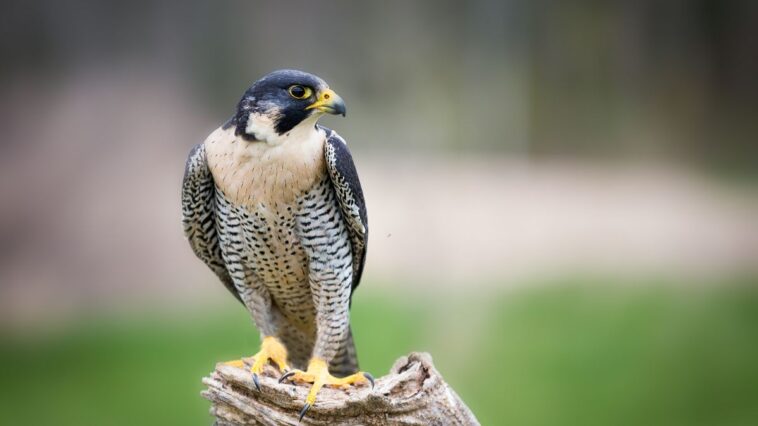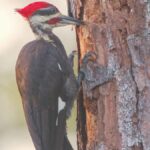Falcons, the majestic birds of prey, have captivated the human imagination for centuries. With their incredible speed, precision, and aerial prowess, they reign as some of the most formidable hunters in the avian world. Yet, their remarkable physical abilities are not the only aspect that sets them apart. Behind their keen eyes and powerful wings lies a fascinating intelligence that has been the subject of admiration and scientific study.
In this post, we embark on a journey to explore the intelligence of falcons, uncovering the cognitive abilities and behavioral traits that make them masters of the skies. From problem-solving skills and learning capabilities to social interactions and adaptability, falcons showcase a range of intelligent behaviors that contribute to their survival and success as apex predators.
Furthermore, we explore the social intelligence of falcons, delving into their complex courtship displays, communication methods, and coordination within family groups. Witness their ability to form strong pair bonds and collaborate with their mates during hunting expeditions.
Drawing from scientific research and observations of these remarkable birds, we shed light on the cognitive abilities and adaptive intelligence that lie within their elegant forms. By understanding the intelligence of falcons, we gain a deeper appreciation for their place in the natural world and the unique qualities that make them true marvels of avian evolution.
Join us as we unlock the secrets of falcons’ intelligence, revealing the fascinating world of these aerial predators and the remarkable cognitive abilities that make them a true force of nature.
Why is Falcon Bird so Special?
The falcon bird, specifically the peregrine falcon, is considered special for several reasons:
- Speed: The peregrine falcon is renowned as the fastest bird in the world and the fastest animal on the planet. During its hunting dives, known as stoops, it can reach over 240 miles per hour (386 kilometers per hour). This exceptional speed is due to its streamlined body shape and powerful wings.
- Hunting Skills: Falcons are highly skilled predators. They have excellent eyesight, which allows them to spot their prey from great distances. They also possess a unique hunting technique called the “stoop,” where they dive from great heights to strike their prey with incredible force.
- Adaptability: Falcons are adaptable birds that can be found in various habitats worldwide, including deserts, forests, mountains, and urban areas. They can thrive in diverse environments and can adjust their hunting strategies accordingly.
- Falconry: Falcons have a long history of being trained and used in the sport of falconry. This ancient practice involves training falcons to hunt prey in partnership with humans. Falconry has been practiced for centuries and is still appreciated today as a cultural tradition and recreational activity.
- Symbolism: Falcons have been revered and symbolized in many cultures throughout history. They are often associated with speed, agility, keen vision, and nobility. Falcons have appeared in mythology, heraldry, and various forms of art, representing power, freedom, and spirituality.
The falcon’s unique characteristics, exceptional hunting abilities, and cultural significance contribute to its special status in the natural world and human perception.
Types of Falcon Birds
There are several falcon birds, each with its characteristics and distribution. Here are some notable examples:
- Peregrine Falcon (Falco peregrinus): The peregrine falcon is a widespread and well-known falcon species. It is found on every continent except Antarctica. As mentioned, it is known for its incredible speed, making it an exceptional hunter.
- American Kestrel (Falco sparverius): The American kestrel is North America’s smallest and most common falcon species. It has a distinctive appearance with colorful plumage, including a rusty back and blue-gray wings. American kestrels are often seen perched on telephone wires or hunting from hovering positions.
- Merlin (Falco columbarius): The merlin is a small falcon in the Northern Hemisphere. Its compact build and swift flight allow it to pursue small birds and insects. The male merlin has a bluish-gray back, while the female has a brownish plumage.
- Eurasian Hobby (Falco subbuteo): The Eurasian hobby is a falcon species in Europe, Asia, and Africa. It is known for its aerial acrobatics and agile flight, enabling it to catch flying insects and small birds. The Eurasian hobby has a dark slate-gray back and a reddish-orange underbelly.
- Gyrfalcon (Falco rusticolus): The gyrfalcon is the largest falcon species found in the Arctic and subarctic regions of North America, Europe, and Asia. It is known for its impressive size and strength. Gyrfalcons have white or grayish-white plumage with darker markings on their wings and back.
- Saker Falcon (Falco cherrug): The saker falcon is a large falcon species found in Central Asia and parts of Europe and the Middle East. Its powerful build can reach high speeds during its hunting flights. The saker falcon has a brownish back and a pale underbelly with dark streaks.
These are just a few examples of the diverse falcon species worldwide. Each species has unique adaptations and behaviors, but they all share the characteristic features of being skilled hunters and formidable birds of prey.
10 Amazing Facts About the Falcon Bird
Here are 10 fascinating facts about falcon birds:
- Fastest Animal: The peregrine falcon is the fastest animal on Earth, reaching over 240 miles per hour (386 kilometers per hour) during its hunting stoop.
- Aerial Predators: Falcons are skilled aerial predators known for their swift and precise hunting techniques. They use their exceptional speed and maneuverability to pursue and capture prey mid-flight.
- Sharp Eyesight: Falcons have incredibly sharp eyesight, allowing them to spot prey from great distances. Their eyes are adapted to detect fine details and track fast-moving objects.
- Diverse Diet: Falcons have a varied diet that primarily consists of other birds, such as pigeons, ducks, and small songbirds. However, they are opportunistic hunters and can feed on insects, bats, and even small mammals.
- Notable Nests: Falcons often build nests on cliffs or high ledges, providing them with vantage points for hunting and protection. Some species, like the peregrine falcon, have adapted to urban environments and can nest on tall buildings and skyscrapers.
- Monogamous Pairing: Falcons are typically monogamous and form strong pair bonds. Mated pairs engage in elaborate courtship displays, including aerial acrobatics and sky dances.
- Migration: Many falcon species are migratory and undertake long-distance journeys to find suitable breeding grounds and food sources. They can cover thousands of miles during their annual migrations.
- Cultural Significance: Falcons have played significant roles in human culture throughout history. They have been associated with deities and nobility, symbolizing speed, power, and freedom in various mythologies and heraldry.
- Falconry: Falcons have been used in falconry, a practice that dates back thousands of years. Falconry is a traditional sport that involves training falcons to hunt prey in partnership with humans.
- Conservation Success: The peregrine falcon, once endangered due to pesticide use and habitat loss, is a notable success story. Through dedicated conservation efforts, populations have recovered in many regions, demonstrating the effectiveness of conservation measures.
These facts highlight falcon birds’ remarkable characteristics and importance in the natural world and human culture.
How Intelligent is a Falcon?
Falcon birds, particularly those of the Falconidae family, are known for their intelligence and cognitive abilities. Here are some key points regarding their intelligence:
- Problem-Solving Skills: Falcons have shown the ability to exhibit problem-solving skills. In captivity, they can learn to navigate mazes, retrieve rewards, and solve puzzles to access food.
- Tool Use: Some wild falcon species have been observed using tools. For example, they may use sticks or other objects to dislodge eggs from cliffs to access the contents.
- Learning and Memory: Falcons demonstrate learning capabilities and memory retention. They can learn hunting techniques and adapt their strategies based on previous experiences. They also exhibit memory of specific hunting grounds and use this knowledge to their advantage.
- Social Intelligence: Falcons exhibit social intelligence, particularly during the breeding season. Mated pairs engage in complex courtship displays, communicate through vocalizations, and coordinate hunting efforts. They also display social bonds within their family groups.
- Communication: Falcons use a variety of vocalizations, postures, and displays to communicate with other individuals. These signals convey aggression, territoriality, courtship interest, or warning signs.
- Problem-Solving in Flight: Falcons showcase impressive problem-solving skills during flight. They can adjust their flight paths, change hunting strategies, and adapt to changing environmental conditions, showcasing their ability to make real-time decisions.
- Cognitive Flexibility: Falcons exhibit cognitive flexibility, which allows them to adapt to new situations and environments. They can switch between different hunting techniques, adjust their flight patterns, and modify their strategies depending on prey availability.
While falcons may not possess the same cognitive abilities as some highly intelligent species like primates or dolphins, they display a range of intelligent behaviors well-suited to their hunting lifestyles and survival in their natural habitats. Their problem-solving skills, learning abilities, memory, social interactions, and adaptability contribute to their intelligence as avian predators.




